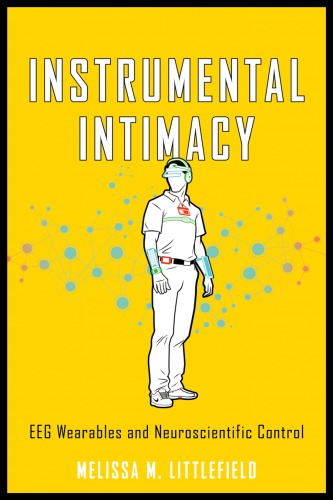Instrumental Intimacy: EEG Wearables and Neuroscientific Control 2018
دانلود کتاب پزشکی صمیمیت خودکار: دستگاه های EEG پوشیدنی و کنترل علوم اعصاب
| نویسنده |
Melissa M. Littlefield |
|---|
| تعداد صفحهها |
176 |
|---|---|
| نوع فایل |
|
| حجم |
11 Mb |
| سال انتشار |
2018 |
89,000 تومان
بررسی انتقادی ظهور مانیتورهای EEG پوشیدنی.
از Fitbits گرفته تا ردیابهای GPS، پوشیدنیها به ما کمک میکنند تا خودمان را به روشهای کمی درک کرده و بهبود ببخشیم. ما قدمهایمان را میشماریم، موقعیتمان را دنبال میکنیم و حتی امواج مغزمان را زیر نظر میگیریم، زیرا برای تناسب اندام بهتر، جهتگیری واضحتر یا ذهن متمرکزتر تلاش میکنیم. اما چرا برای کسب اطلاعات بیشتر در مورد خود به دستگاه های پوشیدنی تکیه می کنیم؟ در صمیمیت خودرو، ملیسا ام.
لیتل فیلد به ویژه بر روی رساندن EEG از آزمایشگاه به دست مصرف کنندگان متمرکز است. در حالی که سایر فناوریهای تصویربرداری مغز (مانند MRI، PET و MEG) فقط در آزمایشگاههای تخصصی استفاده میشوند، الکتروانسفالوگرافی (همچنین به عنوان EEG شناخته میشود) در دستگاههای قابل حمل و با کاربری آسان تعبیه شده است. این پوشیدنیهای مصرفکننده فعالیت مغز را به عنوان دادههای قابل دسترس تجسم میکنند و بسیاری از آنها نوید بهبود خود را میدهند.
کتاب روشنگر لیتلفیلد، تاریخچه EEG را بر روی توسعه معاصر دستگاههای EEG پوشیدنی از طریق مطالعات جعبه کمکهای خواب مبتنی بر EEG، ابزارهای نقشهبرداری حیاتی، ابزارهای نظارتی مدرن و دستگاههای تمرین ورزشی به ارمغان میآورد. نویسنده استدلال میکند که در قرن گذشته، استفادههای کاربردی از EEG به ایجاد حالات ذهنی جدیدی برای نظارت و دستکاری، و همچنین گفتمانهایی در مورد وجود و زنده بودن امواج مغزی به عنوان ابزاری برای بهبود مغز کمک کرده است. با زمینهسازی و تحلیل دستگاههای پوشیدنی، صمیمیت رباتیک مداخلهای حیاتی در بازار مصرفکننده در حال ظهور و در زمینههای علمی STS، علوم اعصاب انتقادی، و تاریخچه فناوری ارائه میکند.
A critical examination of the rise of wearable EEG monitors.
From Fitbits to GPS trackers, wearables promise to help us understand and improve ourselves in quantified ways. We count our steps, track our location, and even monitor our brain waves as we strive to achieve better fitness, clearer direction, or a more focused mind. But why do we rely on wearables to learn about ourselves? In Instrumental Intimacy, Melissa M. Littlefield questions our desire for mechanistic guidance by examining brain-based EEG wearables that promise to improve sleep, relationships, self-knowledge, and learning.
Littlefield focuses specifically on EEGs’ transition out of the laboratory and into the hands of consumers. While other brain-imaging technologies (such as MRI, PET, and MEG) are used only in specialized laboratories, human electroencephalography (a.k.a. EEG) is embedded in portable, user-friendly devices. These direct-to-consumer wearables visualize brain activity as accessible data, and many offer the promise of self-optimization.
Littlefield’s illuminating book brings the histories of EEG to bear on the contemporary development of EEG wearables via case studies of EEG-based sleep aids, bio-mapping instruments, fashionable surveillance tools, and athletic training devices. The author argues that, over the past century, applied uses of EEG helped to create new states of mind to be monitored and manipulated, as well as discourses about the existence of brain waves and their viability as a tool for brain optimization. By contextualizing and analyzing EEG wearables, Instrumental Intimacy provides a crucial intervention in an emergent consumer market and in the scholarly fields of STS, critical neuroscience, and the history of technology.




